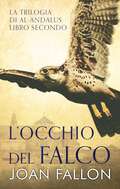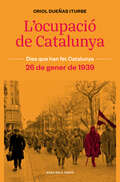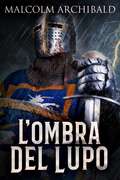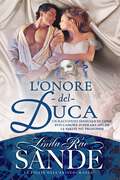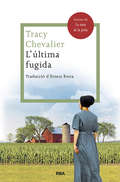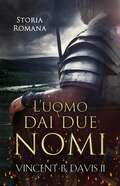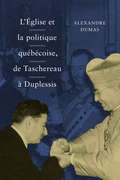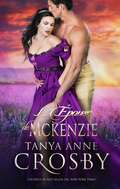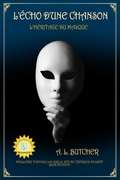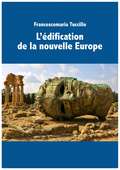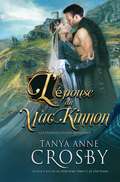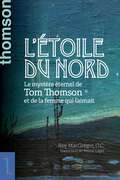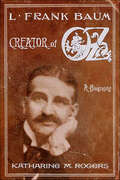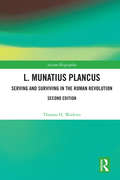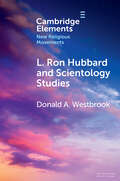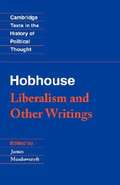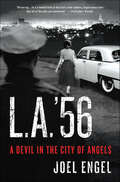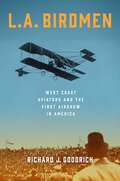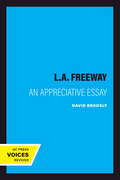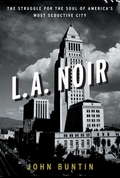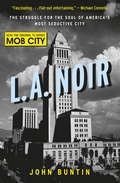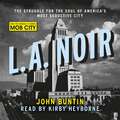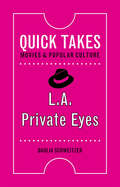- Table View
- List View
L'occhio del falco
by Joan FallonQuesta è la storia di Subh, un’umile schiava che sposando il califfo al-Hakim riesce a diventare la donna più potente del regno di al-Andalus. Quando il califfo muore e lascia come erede il giovane al-Hisham di appena undici anni, Subh cerca di proteggere suo figlio e il trono istituendo una reggenza affinché governi fino alla maggiore età del ragazzo. Tuttavia, accecata dall’amore, non si accorge della spietata ambizione di uno dei reggenti. A poco a poco l’amante di Subh isola il giovane sovrano sia dalla corte che dal resto paese, imprigionandolo nel suo palazzo e spostando la sede del potere a Cordova. Subh dovrà scegliere se proteggere suo figlio o rimanere con il suo amante. L'occhio del falco è un romanzo di intrighi politici e complotti. Ambientato alla fine dell'età d'oro della Spagna musulmana, la storia è ricca di dettagli storici che calano il lettore in un mondo esotico ormai perduto.
L'ocupació de Catalunya
by Oriol DueñasL’ocupació de Catalunya per les tropes de Franco va donar inici a un dels períodes més negres de la història del país. El 26 de gener de 1939, les tropes de Franco van entrar a Barcelona, en una de les últimes grans accions de la Guerra Civil. Oriol Dueñas ho relata amb tot detall, fent reviure els fets d’uns dies en què, mentre les columnes de tropes nacionals s’obrien pas cap a la ciutat, s’apoderaven de l’Eixample i eren rebudes per simpatitzants que sortien als carrers, milers de catalans emprenien el camí de l’exili, per carreteres, cap a França. El llibre relata la caiguda de Barcelona a mans dels franquistes i també les accions simultànies que van tenir lloc aquells dies, des dels bombardejos a ports del nord del país per evitar que els soldats republicans embarquessin per anar a recolzar els darrers focus de resistència a València, fins al control de les centrals elèctriques dels Pirineus que proveïen la capital catalana.
L'ombra del lupo
by Elisabetta Borghi Malcolm ArchibaldIspirato alla storia di Alessandro Stewart - il Lupo del Badenoch. Fergus Scott di Eildon viene inviato a nord per verificare le voci su una forza malvagia. Qui incontra Alistair Mor. Attirato in battaglia dalla magia, Fergus viene aiutato dalla dolce ma irascibile Seonaid. Nel frattempo l'esercito di Donald delle Isole marcia contro Alistair e i problemi aumentano quando le streghe di Scozia si riuniscono per ricreare il Libro della Terra Nera. Mentre le forze del bene e del male si incontrano, Fergus dovrà salvare sia la sua anima che il suo paese.
L'onore del duca (Le figlie dell'aristocrazia #2)
by Linda Rae SandeUn duca che la vita ha segnato profondamente. Riuscirà lei a rimetterne insieme i pezzi? Travolto dal devastante incendio che ha ucciso la sua famiglia e perseguitato da orribili cicatrici, Joshua Wainwright assume il titolo di duca di Chichester pur essendo un uomo distrutto. Costretto a indossare una maschera che copre metà della sua faccia, Joshua lotta con il bilancio emotivo delle sue ferite e con la sensazione che non troverà mai una donna che lo ami veramente. Quando il futuro le viene rubato dopo la morte del fidanzato, Lady Charlotte ha un disperato bisogno di qualcuno da sposare. Ha sempre avuto una cotta segreta per Joshua e, con il suo futuro incerto, diventa determinata a conquistare il cuore del duca e a dimostrargli il suo amore. Incapace di scrollarsi di dosso la sensazione che Charlotte voglia sposarlo solo per dovere, Joshua lotta per resistere al suo fascino. Ma quando un corteggiatore a sorpresa avanza la sua pretesa sulla mano di Charlotte, è costretto a confrontarsi con i propri sentimenti e fare una scelta che plasmerà per sempre il loro futuro... Riuscirà Joshua ad aprire il suo cuore a Charlotte e ad ammettere i suoi sentimenti per lei? O la sua unica possibilità di vero amore gli sfuggirà tra le dita? Imbevuto di passione selvaggia, un pizzico di intrigo e tutto il fascino classico dell'aristocrazia britannica del diciannovesimo secolo, L'onore del duca è un avvincente romanzo d'amore storico, perfetto per i lettori che cercano un po' di consolazione ai loro problemi sentimentali
L'ultima fugida
by Tracy ChevalierAmb la maestria a què ens té acostumats, Tracy Chevalier fon història i ficció en aquesta novel·la sobre el conflicte etern entre les pròpies conviccions i la injustícia de les lleis humanes, a través de l'aventura d'una dona de caràcter en l'ambient hostil d'Ohio al 1850. L'Honor Bright és una humil quàquera anglesa amb el cor trencat. Emigra a Ohio amb la seva germana, esperançada de construir una nova vida, però aviat descobreix que l’Amèrica del XIX és un lloc dur i precari per viure-hi. Un dia un esclau fugitiu apareix a la granja de la nova família de l’Honor, i ella ha de decidir què fa. Fins i tot els quàquers –famosos per defensar la igualtat entre els homes– poden dubtar de trencar les lleis de la terra. Submergida en les activitats clandestines del Ferrocarril Subterrani, una xarxa de gent que ajuda els fugitius a aconseguir la llibertat, l’Honor coneix dues dones que li demostren el que pot aconseguir plantant cara. Haurà de decidir si ella també pot actuar segons el que creu, sigui quin sigui el risc que li comporti.
L'uomo dai due nomi
by Vincent B. Davis IIRome, 107 BC. Quintus Sertorius just lost his father and he may lose his home. When his rural village is stripped of its political status, he must leave his family to secure their food and protection from Rome's government. As he transitions from countryman to politician and soldier, he's thrust into the middle of a bitter political war. As Quintus struggles to gain the aid his village so desperately needs, he approaches Gaius Marius, the uncle of Julius Caesar himself. Roma, 107 a.C. Quinto Sertorio ha appena perso suo padre e potrebbe perdere la sua casa. Quando il suo villaggio rurale viene privato del suo status politico, deve lasciare la famiglia per assicurarsi cibo e protezione da parte del governo di Roma. Mentre passa da imprenditore di campagna a politico e soldato, si trova nel bel mezzo di un'aspra guerra politica. Lottando per ottenere l'aiuto di cui il suo villaggio ha disperatamente bisogno, si avvicina a Gaio Mario, lo stesso zio di Giulio Cesare.
L'Église et la politique québécoise, de Taschereau à Duplessis (Studies on the History of Quebec/Études d'histoire du Québec #36)
by Alexandre DumasSi l'on en croit l'historien Denis Vaugeois, les gens inventent des histoires depuis soixante ans à propos du gouvernement de Maurice Duplessis. Dans le domaine de la politique, l'image généralement acceptée du Québec d'avant la Révolution tranquille est celle d'une société écrasée par une Église catholique omniprésente, avec la complicité d'un gouvernement de l'Union nationale corrompu. L'arrivée au pouvoir du Parti libéral de Jean Lesage en 1960 devait mettre un terme à cette puissante alliance et permettre ainsi au Québec d'entrer dans l'ère moderne. Se peut-il que les tendances politiques du clergé catholique se démarquaient alors de cette idée populaire et l'avaient toujours fait? L'Église et la politique québécoise, de Taschereau à Duplessis jette un nouveau regard sur des préjugés concernant le rôle historique joué par l'Église catholique dans la politique du Québec. Le soutien électoral du clergé à l'Union nationale, la ferme opposition de l'Église au droit de vote des femmes, l'origine cléricale de la Loi du cadenas et le soutien accordé par l'archevêque de Montréal au dirigeant fasciste Adrien Arcand sont toutes des notions qui ont reçu l'aval inconditionnel des historiens – des idées remises en question dans cet ouvrage. En ce qui a trait à la relation entre l'Église et l'État, Maurice Duplessis s'inscrivait dans la continuité de ses homologues libéraux. Après avoir consulté des archives jusqu'ici inaccessibles, Alexandre Dumas en vient à la conclusion surprenante que l'Église catholique était peut-être plus sympathique à la cause du Parti libéral qu'à celle de l'Union nationale.
L'Épouse de McKenzie
by Tanya Anne Crosby Angélique Olivia MoreauFarouchement attachée à son indépendance, Elizabeth Bowcock – connue de tous sous le nom de « Doc Liz » – s'est juré d'élever seule sa nièce devenue orpheline. Malheureusement, le grand-père de l'enfant a déclaré la femme médecin célibataire inapte à devenir sa tutrice et refuse de la lui confier avant qu'elle ne se soit trouvé un mari... Se présente alors Cutter McKenzie, avec ses cheveux noirs et son regard diabolique. Rejeté à cause de ses origines cheyennes, le beau sang-mêlé se porte volontaire pour se faire passer pour le mari d'Elizabeth. Et si son charme infernal met en péril l'indépendance de Liz, le voyage vers St. Louis promet des dangers encore plus grands...
L'écho d'une chanson (L'héritage du masque (contes) #1)
by A L ButcherUne douzaine d’années tumultueuses après les événements dramatiques de l’Opéra de Paris Raoul, le comte de Chagny est toujours hanté par le mystérieux fantôme de l’opéra — la créature de légende qui a tenu le personnel de l’Opéra sous son emprise, a enlevé l’amour de Raoul et assassiné son frère. Dans l’imagination troublée de Raoul, les fantômes du passé sont partout, et une musique étrange et puissante appelle encore dans ses rêves. La folie, l’obsession et l’héritage du passé tissent leur charme dans ce court récit tragique basé sur le Fantôme de l’Opéra. Meilleure Fantasy 2019 sur le site de critiques NN Light Book Heaven!
L'édification de la nouvelle Europe
by Francescomaria TuccilloL’avenir de l’Europe et son rôle stratégique dans le monde créé sur la base de son histoire et des ses racines culturelles.
L'épouse du MacKinnon
by Tanya Anne Crosby Angélique Olivia MoreauDescendant des puissants fils de MacAlpin, Iain MacKinnon refuse de se soumettre à l'Angleterre. Pourtant, quand son jeune fils est fait prisonnier, le fier chef de clan écossais est prêt à tout pour retrouver son enfant. Rendant la pareille à son ennemi, il enlève sa fille, prévoyant de faire un pacte avec le diable. La fille de FitzSimon a passé toute sa vie dans l'ombre de celui qu'elle appelle « père », mais elle n'aurait jamais pu concevoir que ce dernier repousserait son unique fille. Même si Page en veut à son ravisseur d'avoir rompu l'entente passée avec son père, elle soupçonne la vérité... Les ombres abritent bien des secrets. À présent, seul l'amour de son réticent protecteur pourra sauver l'épouse du MacKinnon.
L'étoile du nord: Le mystère éternel de Tom Thomson et de la femme qui l’aimait (Biographies et mémoires #16)
by Roy MacGregorRoy MacGregor grew up in Huntsville, close to his beloved Algonquin Park, where he spent his childhood surrounded by stories of the famous painter. At the heart of it all was MacGregor’s relative, Winnie Trainor, the “old maid” too eccentric to be considered a romantic character, even if it was well known that Tom Thomson had once been in love with her. MacGregor’s fascination with the mysterious painter went deeper. Thomson had made friends in Northern Ontario, but also enemies. He liked to drink and canoe for days on end; he was also seen as a seducer. Be that as it may, the artist’s body was found in Canoe Lake in July 1917. The confusion surrounding his death and burial site was never resolved. In Northern Light (L’étoile du nord), MacGregor offers new leads and reveals previously hidden details of Thomson’s final days, as well as forensic data. Was Thomson a good-for-nothing womanizer or a visionary artist and gentleman? Did he drown accidentally or was he a victim of homicide? The myth of Tom Thomson has grown to obscure the reality of what happened, but the answers to many of these questions are finally revealed here.
L. Frank Baum: A Biography
by Katharine M. RogersSince it was first introduced over a hundred years ago in The Wonderful Wizard of Oz, L. Frank Baum's world of Oz has become one of the most enduring and beloved creations in children's literature. It has influenced numerous prominent writers and intellectuals, and become a lasting part of the culture itself.L. Frank Baum was born in 1856 in upstate New York, the seventh child of a very successful barrel-maker and later oil producer. However, Baum's own career path was a rocky one. Beginning as an actor, Baum tried working as a traveling salesman, the editor of a small town newspaper and the publisher of a trade journal on retailing, failing to distinguish himself in any occupation. His careers either failed to provide a sufficient living for his beloved wife Maud and their children or were so exhausting as to be debilitating. In the 1890's, L. Frank Baum took the advice of his mother-in-law, suffragist leader Matilda Gage, and turned his attention to trying to sell the stories he'd been telling to his sons and their friends. After a few children's books published with varying success, he published The Wonderful Wizard of Oz in 1900 and it quickly became a bestseller and has remained so ever since.In this first full-length adult biography of Baum, Rogers discusses some of the aspects that made his work unique and has likely contributed to Oz's long-lasting appeal, including Baum's early support of feminism and how it was reflected in his characters, his interest in Theosophy and how it took form in his books, and the celebration in his stories of traditional American values. Grounding his imaginative creations, particularly in his fourteen Oz books, in the reality of his day, Katharine M. Rogers explores the fascinating life and influences of America's greatest writer for children.
L. Munatius Plancus: Serving and Surviving in the Roman Revolution (Routledge Ancient Biographies)
by Thomas H. WatkinsThis volume examines the life and career of L. Munatius Plancus, and through him, explores the tumultuous final years of the Roman Republic. Plancus had very active and lengthy political career, from his initial appearance on the staff of Julius Caesar in Gaul in 54BC at least through the censorship of 22BC. During this time, he was in close contact for over 30 years with all the major figures during a period of tremendous political and social upheaval in Rome. He maneuvered carefully and cautiously, changing affiliation from boyhood ties to Cicero, to Caesar, to Antony and Cleopatra, and finally to Octavian - it was Plancus himself who proposed the motion whereby the Senate conferred the name "Augustus" on the new ruler of Rome. More than just a biography of this fascinating figure, this volume also offers insight into the politics of this complex period.
L. Ron Hubbard and Scientology Studies (Elements in New Religious Movements)
by Donald A. WestbrookThis Element surveys the history and practice of Scientology studies over the past sixty years and offers resources for scholars and students moving forward. Section 1 reviews the history of academic research on the subject from 1958 to the present day. Section 2 draws on the author's fieldwork with the Church of Scientology to illuminate how founder L. Ron Hubbard (1911–86) is viewed among contemporary members. Section 3 considers Hubbard's influence and legacy in terms of the church sites and institutions that exist today in connection with the soteriological 'Bridge to Total Freedom.' Section 4 introduces English-language archival resources and their strengths. Section 5 proposes some open areas for Scientology researchers. Finally, glossaries of terms and appendices are included with major dates in Hubbard's life and Scientology research and bibliographical information for major archival collections in North America.
L. S. Dickey and the Valley Horsemen
by Sandra McintoshThe life of and stories about legendary Saddlebred trainer and dealer L. S. Dickey during the first half of the 20th century, in a time that grew a special breed of American Saddlebred horsemen. The stories of L. S. Dickey and his proteges from an area in southern Indiana simply known as "The Valley". These men went on to play a very important role in the Saddlebred world.
L. T. Hobhouse: Liberalism and Other Writings
by James Meadowcroft L. T. HobhouseL. T. Hobhouse was the most sophisticated intellectual exponent of liberal social reform in the early years of the twentieth century. This edition of his classic Liberalism, which includes a number of his other contemporaneous writings, will be of interest to a broad range of students and scholars in politics and the history of political thought.
L.A. '56: A Devil in the City of Angels
by Joel EngelLos Angeles, 1956. Glamorous. Prosperous. The place to see and be seen. But beneath the shiny exterior beats a dark heart. For when the sun goes down, L.A. becomes the noir city of James Ellroy's L.A. Confidential or Walter Mosley's Easy Rawlins novels. Segregation is the unwritten law of the land. The growing black population is expected to keep to South Central. The white cops are encouraged to deal out harsh street justice. In L.A. '56, Joel Engel paints a tense, moody portrait of the city as a devil weaves his way through the shadows.While R&B and hot jazz spill out of record shops and clubs and all-night burger stands, Willie Fields cruises past in his dark green DeSoto, looking for a woman on whom he can bestow the gift of his company. His brilliant idea: Buy a tin badge in the five-and-ten to go along with his big flashlight and Luger and pretend to be an undercover vice cop. The young white girls doing it with their boyfriends in the lovers' lanes dotting the L.A. hills would never say no to a cop. Into the car they go for a ride downtown on a "morals charge," before he kicks out the young man in the middle of nowhere and takes the girl for a ride she'll spend a lifetime trying to forget.There's a bad guy on the loose in the City of Angels.Enter Detective Danny Galindo-he'd worked the Black Dahlia case back in '47 as a rookie. The suave Latino-one of the few in the department-is able to move easily among the white detectives. Maybe it's all those stories he's sold to Jack Webb for Dragnet. When Todd Roark, a black ex-cop, is arrested, Galindo knows he's innocent. But there's no sympathy for Roark among the white cops on the LAPD; Galindo will have to go it alone.There's only one problem: The victims aren't coming forward. The white press ignores the story, too, making Galindo's job that much more difficult. And now he's fallen in love with one of the rapist's first victims. If he's ever found out, he can kiss his badge good-bye.With his back up against a wall, Galindo realizes that it will take some good old-fashioned Hollywood magic to take down a devil in the City of Angels.
L.A. Birdmen: West Coast Aviators and the First Airshow in America
by Richard J. GoodrichAlthough most credit Wilbur and Orville Wright with America&’s first powered flight, two months before the brothers lifted off the sands of Kitty Hawk, a French immigrant named August Greth flew the California Eagle, an airship of his own design, across the skies of San Francisco. While the Wrights claimed they had invented a flying machine, Greth and the California aviators proved it in front of thousands of spectators at state fairs and festivals across the country. L.A. Birdmen is the fascinating and forgotten story of America&’s first aviators—Californians like August Greth, Tom Baldwin, Roy Knabenshue, John Montgomery, and James Zerbe. Possessing a rare blend of ingenuity, creativity, and bravery, these pilots captured the world&’s attention in 1910 when Los Angeles hosted America&’s first international airshow. Inspired by a flying exhibition held in Reims, France, Los Angeles promoter Dick Ferris convinced the city to host a competing event—a show that featured the world&’s best pilots and machines and would firmly establish Los Angeles as the center of American aviation.Featuring a fierce competition between French pilot Louis Paulhan and American Glenn Curtiss, the Los Angeles International Aviation Meet was a revelation: the pilots shattered existing aviation records, refuted those who doubted the viability of heavier-than-air flying machines, and performed death-defying stunts. The ten days of flying received national newspaper coverage and attracted more than 100,000 visitors, including future industry leaders like Glenn Martin and William Boeing.L.A. Birdmen offers a high-flying account of the West Coast contribution to aviation, a little-recognized chapter in the story of American flight. In the first decade of the twentieth century, these dashing aviators—not the Wrights—were the public face of American aviation.
L.A. Freeway: An Appreciative Essay
by David BrodslyThis title is part of UC Press's Voices Revived program, which commemorates University of California Press’s mission to seek out and cultivate the brightest minds and give them voice, reach, and impact. Drawing on a backlist dating to 1893, Voices Revived makes high-quality, peer-reviewed scholarship accessible once again using print-on-demand technology. This title was originally published in 1981.
L.A. Noir: The Struggle for the Soul of America's Most Seductive City
by John BuntinOther cities have histories. Los Angeles has legends. Midcentury Los Angeles. A city sold to the world as "the white spot of America," a land of sunshine and orange groves, wholesome Midwestern values and Hollywood stars, protected by the world's most famous police force, the Dragnet-era LAPD. Behind this public image lies a hidden world of "pleasure girls" and crooked cops, ruthless newspaper tycoons, corrupt politicians, and East Coast gangsters on the make. Into this underworld came two men-one L.A.'s most notorious gangster, the other its most famous police chief-each prepared to battle the other for the soul of the city. Former street thug turned featherweight boxer Mickey Cohen left the ring for the rackets, first as mobster Benjamin "Bugsy" Siegel's enforcer, then as his protégé. A fastidious dresser and unrepentant killer, the diminutive Cohen was Hollywood's favorite gangster-and L.A.'s preeminent underworld boss. Frank Sinatra, Robert Mitchum, and Sammy Davis Jr. palled around with him; TV journalist Mike Wallace wanted his stories; evangelist Billy Graham sought his soul. William H. Parker was the proud son of a pioneering law-enforcement family from the fabled frontier town of Deadwood. As a rookie patrolman in the Roaring Twenties, he discovered that L.A. was ruled by a shadowy "Combination"-a triumvirate of tycoons, politicians, and underworld figures where alliances were shifting, loyalties uncertain, and politics were practiced with shotguns and dynamite. Parker's life mission became to topple it-and to create a police force that would never answer to elected officials again. These two men, one morally unflinching, the other unflinchingly immoral, would soon come head-to-head in a struggle to control the city-a struggle that echoes unforgettably through the fiction of Raymond Chandler and movies such as The Big Sleep, Chinatown, and L.A. Confidential. For more than three decades, from Prohibition through the Watts Riots, the battle between the underworld and the police played out amid the nightclubs of the Sunset Strip and the mansions of Beverly Hills, from the gritty streets of Boyle Heights to the manicured lawns of Brentwood, intersecting in the process with the agendas and ambitions of J. Edgar Hoover, Robert F. Kennedy, and Malcolm X. The outcome of this decades-long entanglement shaped modern American policing-for better and for worse-and helped create the Los Angeles we know today. A fascinating examination of Los Angeles's underbelly, the Mob, and America's most admired-and reviled-police department, L.A. Noir is an enlightening, entertaining, and richly detailed narrative about the city originally known as El Pueblo de Nuestra Se-ora la Reina de los Angeles, "The Town of Our Lady the Queen of the Angels."From the Hardcover edition.
L.A. Noir: The Struggle for the Soul of America's Most Seductive City
by John BuntinThe epic struggle for control of Los Angeles and the history of the 30s, 40s, and 50s in America's dream city. Now the FOX UK TV series MOB CITY.Mid-century Los Angeles. A city sold to the world as 'the white spot of America', a land of sunshine and orange groves, wholesome Midwestern values and Hollywood stars, protected by the world's most famous police force, the Dragnet-era LAPD. Behind this public image lies a hidden world of 'pleasure girls' and crooked cops, ruthless newspaper tycoons, corrupt politicians, and East Coast gangsters on the make. Into this underworld came two men - one L.A.'s most notorious gangster, the other its most famous police chief - each prepared to battle the other for the soul of the city.The Mob had to contend with downtown business (the Chandlers, of LA Times fame), City Hall, and above all the LAPD - and the story is gripping. In these pages you will find the kind of gangsters, cops, pols, and madams familiar from The Big Sleep, Chinatown, and LA Confidential - only this time it's non-fiction, a serious portrait of how the 20th century's most dangerously unaccountable, intrusive model of pre-emptive policing got started. It's a story with great resonance today.
L.A. Noir: The Struggle for the Soul of America's Most Seductive City
by John BuntinMid-century Los Angeles. A city sold to the world as 'the white spot of America', a land of sunshine and orange groves, wholesome Midwestern values and Hollywood stars, protected by the world's most famous police force, the Dragnet-era LAPD. Behind this public image lies a hidden world of 'pleasure girls' and crooked cops, ruthless newspaper tycoons, corrupt politicians, and East Coast gangsters on the make. Into this underworld came two men - one L.A.'s most notorious gangster, the other its most famous police chief - each prepared to battle the other for the soul of the city.The Mob had to contend with downtown business (the Chandlers, of LA Times fame), City Hall, and above all the LAPD - and the story is gripping. In these pages you will find the kind of gangsters, cops, pols, and madams familiar from The Big Sleep, Chinatown, and LA Confidential - only this time it's non-fiction, a serious portrait of how the 20th century's most dangerously unaccountable, intrusive model of pre-emptive policing got started. It's a story with great resonance today.Read by Kirby Heyborne(p) 2012 Tantor, Inc
L.A. Plays Itself/Boys in the Sand
by Cindy PattonA Queer Film Classic on two groundbreaking gay arthouse porn films from 1972, both examples of the growing liberalization of social attitudes toward sex and homosexuality in post-Stonewall America. Where Fred Halsted's Boys in the Sand is a frothy romp at a gay beach resort community, Wakefield Poole's L.A. Plays Itself is a dark treatise on violence and urban squalor. Both films represent particular, polarizing moments in the early history of the gay movement.Cindy Patton is a longtime activist and scholar. She is currently professor of sociology at Simon Fraser University in British Columbia.
L.A. Private Eyes (Quick Takes: Movies and Popular Culture)
by Dahlia SchweitzerL.A. Private Eyes examines the tradition of the private eye as it evolves in films, books, and television shows set in Los Angeles from the 1930’s through the present day. It takes a closer look at narratives—both on screen and on the printed page—in which detectives travel the streets of Los Angeles, uncovering corruption, moral ambiguity, and greed with the conviction of urban cowboys, while always ultimately finding truth and redemption. With a review of Los Angeles history, crime stories, and film noir, L.A. Private Eyes explores the metamorphosis of the solitary detective figure and the many facets of the genre itself, from noir to mystery, on the screen. While the conventions of the genre may have remained consistent and recognizable, the points where they evolve illuminate much about our changing gender and power roles. Watch a video of the author speaking about this topic: https://goo.gl/Xr9RFD And also: https://www.dropbox.com/s/mkqw3mplruf7jje/Detective%20Talk%20Full.mp4?dl=0 (https://www.dropbox.com/s/mkqw3mplruf7jje/Detective%20Talk%20Full.mp4?dl=0)
